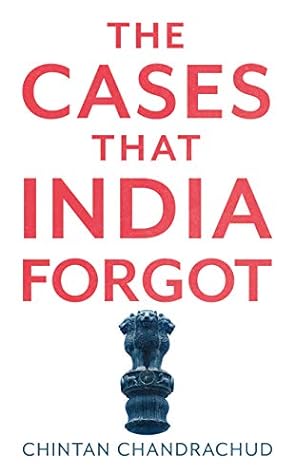More on this book
Community
Kindle Notes & Highlights
Article 361 of the Constitution states that the governor cannot be held answerable to a court for the exercise of his powers),
disclosure by virtue of Article 163(3) of the Constitution, which stated that
no court could inquire into what advice ministers (which would include an adviser such as Ribeiro) tendered to the governor.
However, Sections 354 and 509 of the IPC were grounded in Victorian conceptions of modesty and honour. These sections typecast women as meek and modest, with crimes arising from the violation of this notion of modesty.
Article 15(1) prohibited the state from discriminating against any citizen ‘on grounds only of religion, race, caste, sex, place of birth or any of them’. Article 29(2) stated that ‘[n]o citizen shall be denied admission into any educational institution maintained by the state or receiving aid out of state funds on grounds only of religion, race, caste, language or any of them’.
‘Equality’ and ‘reservations’ became opposites rather than correlatives.
125 of the Criminal Procedure Code (CrPC).
it extensively cited Narasu and the proposition that personal law was immune from fundamental rights challenges.
In 1996, a judge of the Supreme Court observed that personal laws imposing an inferior status on women were ‘anathema to equality’ and must be consistent with the Constitution, including fundamental rights.
This means that in the world’s largest constitutional democracy, one category of law (uncodified personal law) is effectively above the Constitution itself.
challenged, the US Supreme Court abdicated
Ranganath Misra, former chief justice of India, was the first chairperson of the NHRC.
These efforts proved successful as sufficient political support was galvanized to ensure that TADA would not be renewed beyond 23 May 1995. This was a major early accomplishment for the NHRC.
The AFSPA was enacted in 1958 in response to insurgency and demands for self-determination in the Northeast.
which can colloquially be described as the licences to kill, destroy, arrest and search.
Section 6 of the AFSPA, which granted immunity from prosecution to officers without permission from the central government, was also upheld. For the court, this section did not grant impunity, but only granted the protection that officers needed to conduct their operations.
No constitutional analysis of a law that has been in force for a prolonged period can be complete without considering how that law operates on the ground. In this instance, the extensive evidence
The Justice Jeevan Reddy Committee was established in 2005 to review the operation of the AFSPA after the killing of Thangjam Manorama in the custody of Assam Rifles.
The committee observed that the AFSPA had become ‘a symbol of oppression, an object of hate and an instrument of discrimination and highhandedness’.28 It recommended repealing the AFSPA and placing some of its provisions into a different law, the Unlawful Activities (Prevention) Act of 1967. The Second Administrative Reforms Commission of the central government, chaired by Veerappa Moily, also recommended the repeal of AFSPA in 2007.29 In 2013, the Justice Verma Committee – chaired by the same judge who was on the bench that decided the Naga People’s Movement case – stressed the need to review
...more
Bombay monsoons in 1951 would result in religious ‘personal laws’ being immunized from the scrutiny of fundamental rights for decades.


